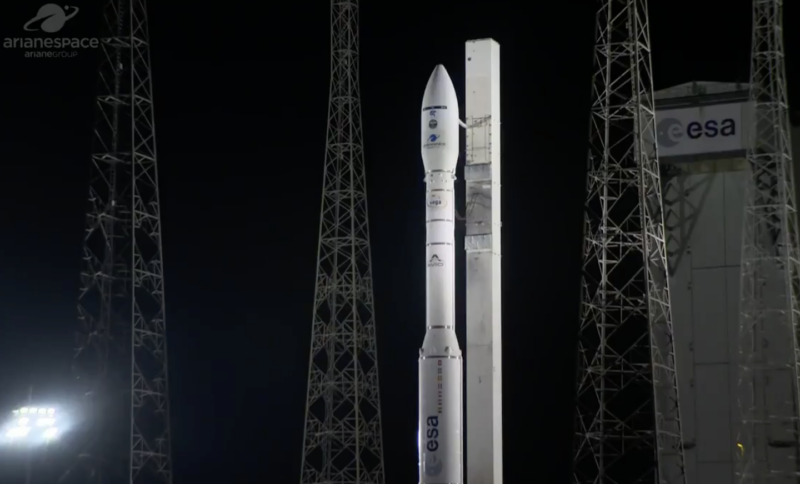Latest News

An Arianespace Vega rocket on the pad just before the VV17 mission that failed on Nov. 16. Screenshot via Arianespace.
The commission set up by the European Space Agency (ESA) and Arianespace to investigate the Vega launch failure in November has released its findings. Arianespace CEO Stéphane Israël said in a Dec. 17 press release that the findings may allow a return to flight for the Vega by the end of the first quarter of 2021.
The commission reported that the failure was caused by wrong routing and connection of the control lanes of the electro-mechanical actuators of the Attitude Vernier Upper Module (AVUM) upper stage Thrust Vector Control (TVC) system. This inverted steering commands caused trajectory degradation, which led to the loss of the vehicle.
The Vega rocket took off from the Guiana Space Center (GSC) in French Guiana on Nov. 16, but eight minutes after liftoff, after the first ignition of the AVUM upper stage, the trajectory deviated and the mission was lost. The mission lost two payloads, satellites for France and Spain: SEOSAT-Ingenio, an Earth Observation (EO) satellite for Spain’s Center for Development of Industrial Technology (CDTI), and a lightning research satellite called TARANIS for The French Space Agency (CNES).
The commission detailed the series of causes: “a misleading integration procedure causing an inversion of electrical connections, not detected through the different control steps and tests executed between the integration of the AVUM upper stage and the final acceptance of the launcher due to some inconsistencies between specific requirements and prescribed controls.”
The commission issued recommendations including additional inspections and tests on the next two Vega launchers, whose hardware is already totally or partially produced, and workmanship. A task force led by ESA and Arianespace has started implementing the recommendations.
Get the latest Via Satellite news!
Subscribe Now